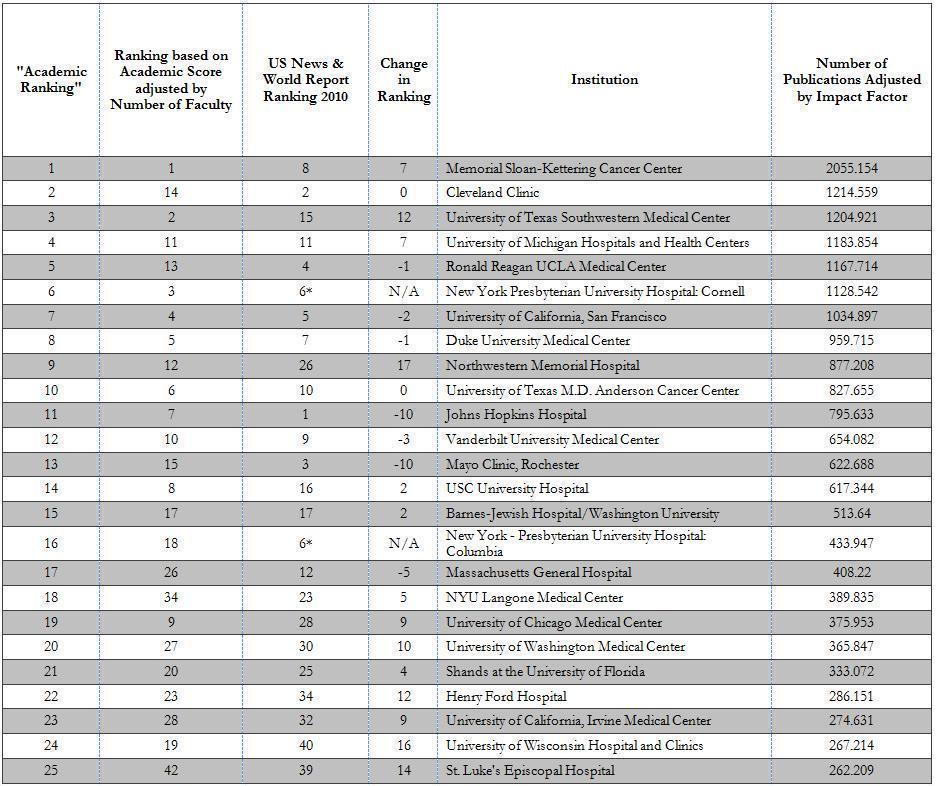|
Back to 2011 Program
"Academic Ranking Score": A Reproducible Metric of Thought Leadership in Urology
Alexander Kutikov, Boris Rozenfeld, Jay Simhan, Jose Reyes, Brian L Egleston, Mohit Sirohi, Raymond Hwang, Robert G Uzzo
Fox Chase Cancer Center, Temple University School of Medicine, Philadelphia, PA
Introduction: U.S. News & World Report (USNWR) rankings of hospitals are an integral marketing strategy for healthcare systems. Nevertheless, the methodology utilized appears flawed due to the disproportionate reliance on “reputation”, as determined by querying approximately 125 urologists. In an effort to develop an improved measure of a urology department's contribution, we have developed the “Academic Ranking Score" (ARS).
Methods: All publications as first or last author from 2005-2010 were identified using an active faculty list for each urology department. The ARS was derived by normalizing the tabulated publications by the Impact Factor of the journal of publication. The 2010 USNWR Top-50 urology hospitals were then re-ranked based on ARS (Table 1).
Results: 6,437 urological publications were indexed to calculate ARS. Two of the top 3 programs in the USNWR rankings dropped out of the top 10. Meanwhile, the top 10 academically ranked programs moved an average of >5 positions (range 0-17). No correlation was seen between programs ranked in the top 10 by USNWR and our ARS method (Spearman's rho -0.1,p=0.75). When adjusting ARS on a per-FTE basis to eliminate bias of size, the disparity in rank lists persisted (Spearman's rho -0.33,p=0.23).
Conclusions: ARS departmental rankings determined through quantification of recent academic contribution differs substantially from the USNWR. Our integration of Objective measures into an overall ranking system replaces subjective opinions with up-to-date, merit-based assessments. 
Back to 2011 Program
|